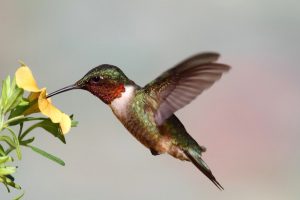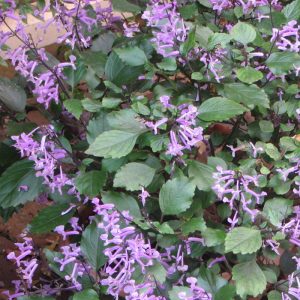Flowering Perennials:
Beautiful, blooming perennials that are suitable for spring/summer planting are Geraniums, Pentas, Salvias, Gazanias, Gaillardia, Dune Sunflower, Begonias, Batface, Cigar Plant, Heliotrope, Scaeveola, Scabiosa, Heather, Blu My Mind, Angelonia, Verbena, Phlox, Vinca, Lantanas, Coreopsis, Impatiens, Guara, and many, many more. Whether you’re planting a border, butterfly garden, or creating a colorful container there’s so many to choose from!
Attracting Butterflies:

Use salvias, pentas, milkweed, cigar plant, and lantanas to name a few of the perennials that will attract butterflies. Salvias will stand a little taller than their other flower friends with Butterflies and Hummingbirds feeding on their nectar rich flower spikes. Milkweed and cigar plant will be taller with pentas and lantana being shorter.
Two Great Performing Flowers for Shade:
Mona Lavender & Impatiens are two great options for providing lots of flowers from spring to frost. Whether you plant them in the ground or containers they’ll certainly brighten up your shady areas. Watch for them to arrive in the coming weeks.
Unlike trees and basic hedge shrubs, flowers and blooming shrubs require their soil a little richer. Incorporating potting soil with compost or other organics will provide a great growing medium that is not only rich in humus but DRAINS well. After planting, fertilize with 6-8-10 slow-release Bloomer for flowers.
Hummingbirds are back!
Everyone loves to see these tiny birds fluttering in the garden and nectar providing flowers are vital for these busy little ‘Hummers’!

Males are arriving now and females follow a week later. Females will lay two eggs that hatch in 20 days. Females will hatch 2-3 times per year – which explains why they are so plentiful late summer and fall! While still in the nest the young feed on insects brought by their parents, but after only four weeks they leave in search of nectar. The most common hummer for our area is the ruby-throated hummingbird.
Because of their high-speed activity, they require nectar from flowers. Sugared water does NOT supply the adequate nourishment needed for these busy little birds. For their size, they have the largest appetites in the bird world. Adults feed primarily on nectar that they extract from flowers. They feed every 10 to 15 minutes from dawn to dusk, with the heaviest feeding time late afternoon.
Because of their high-speed activity, they require nectar from flowers. Sugared water does NOT supply the adequate nourishment needed for these busy little birds. For their size, they have the largest appetites in the bird world. Adults feed primarily on nectar that they extract from flowers. They feed every 10 to 15 minutes from dawn to dusk, with the heaviest feeding time late afternoon.
If you want hummingbirds in your garden plant some of these options: Mystic Spires Salvia, Dwarf Fire Bush, Pentas (especially red), Cigar Plant, Batface, Angelonia, Bottlebrush, Night Blooming Jasmine, Coral Honeysuckle, Cleome, and Shrimp Plant and Firecracker plants.
Remember to add both host and nectar plants to your garden. Milkweed in particular is the ONLY host plant for Monarch butterflies.
